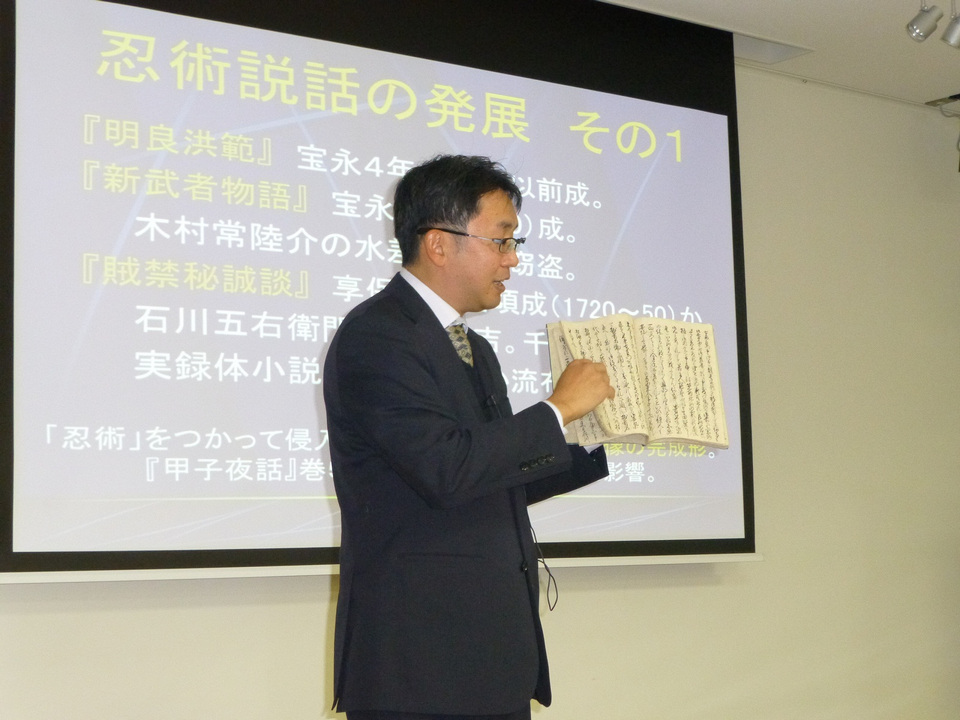Lecture No.3: Ninja in the early-modern literature
Ninja in the early-modern literature (summary)
Lecturer: Katsuya Yoshimaru
For the studies about Ninja, we should consider dividing the image of Ninja into two different ones, namely, the real one with its historical existence (Shinobi or Shinobi-no-mono) and the other unreal and virtual one coming from fantasy (Ninja, through novels and/or dramas).
The main stream of current studies about Ninja is to elucidate their real selves, but on the other hands, just like people in Edo-period, modern people also have their idea of a Ninja through their virtual images. Due to this point of view, it's also important for us to study about the virtual one. The essential part of Ninja based on fantasy is Ninjutsu, their superhuman skills and the narratives in which unreal Ninjas appear are written in typical patterns. One of them is how a "Ninja sneaks into a place with their superhuman Ninjutsu skills and returns with stolen valued items.
"Togibouko" written by Ryoui Asai (published in 1666-6th year of Kanbun) included two Ninja narratives, "Tobikatou" and "Setsu-no-Jutsu" as its introduction. They were based on the structure of the Chinese narratives "Konrondo" and "Denbourou", included in a collection of stories called "Kenkyouden", in "Gochou-Shosetsu", and also their detailed episodes were referred to "koyo gunkan massho ketsuyobon". "Togibouko" was written as adapted stories from the "Kenkyoden". Because the character of Kenkyo in the original stories was not popular among Japanese at that time, instead of Kenkyo, Asakura used the well-known Ninja character with superhuman Ninjutsu skills as for his novels. "Togibouko" was written with the essence that Ninja could sneak in everywhere by their Ninjutsu, steal something valuable and bring the things back with.They could also be one of the earliest novels which telling about Ninja as unreal existence. At a later time, for example "Yari-wo-hiku-nezumi-no-yukue", first story in vol.5 of "Shin-Kashouki" written by Saikaku Ihara, and some other novels took this architecture with Ninja for their story-telling. Then, after the novel "Zokkin Hiseidan" presented its famous main character "Goemon Ishikawa", it seemed that the virtual image of Ninja became standard among the public, such as " Ninja could sneak in everywhere by their Ninjutsu and steal something valuable and bring them back with them". "Ukai Katsuyama Jikki" was written by Koka-koshi (the old-time samurai from Koka-ryu) and it noted about the activities of Koka Koshi. Their description about the duties could sound superhuman, so we can say that it was also influenced by this virtual image.
